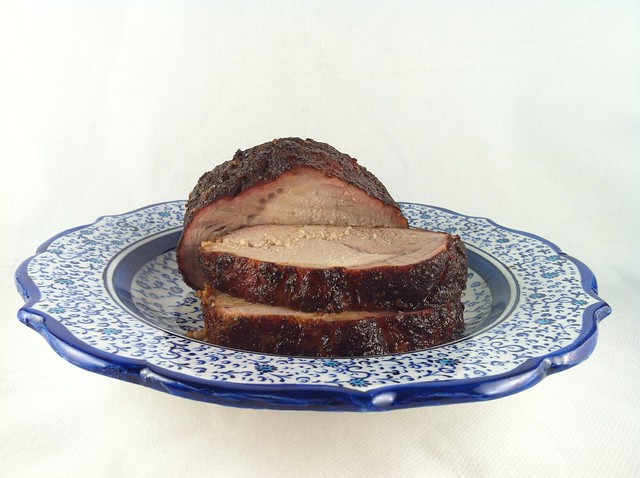The fastest way to my heart is through my stomach; feed me while we’re in a place I’ve never been before and we’ll forever be friends. Certainly the fastest way to learn about a culture is through its food, and often that begins on its bustling streets.
Francine, Lucy, Justin and I spent a long winter weekend in Istanbul, Turkey earlier this year to get to know the only country that sits on two continents. We had to be efficient and see as much of the most popular tourist spots within our time frame and all the walking we did allowed us to graze in different neighborhoods and try a variety of food.
Outside the mosques and museums were the vendors that sell simit and sahlab. Simit resembles a pretzel covered in sesame seeds, but is lighter and more fluffy. It’s a bit bland without butter or jam, but it was a good bite when we were in a pinch to keep me from being grouchy. Sahlab is a hot milk tea served with cinnamon. Traditionally, it’s made out of salep, or orchid water, but the drink’s popularity had led to the decline of wild orchids, and cornstarch is now more commonly used. I loved how a thin layer forms at the top and you have to risk a burnt tongue to slurp through the rest of it. Once cool enough to drink though, it’s subtlety sweet and warms the bones.
In Balik Pazari, or the fish market, I ate mussels stuffed with rice, pine nuts and currants called midye dolmas. The vendors have the mussels arranged in several rows, and at first glance they look raw, but all you have to do is pick and open one up to pop the contents into your mouth. It was my favorite snack in Istanbul and if we didn’t have to keep moving, I would have stayed standing next to the cart and have eaten more than a dozen! The vendors also served battered mussels deep-fried in a skewer and then slathered with white garlic sauce.
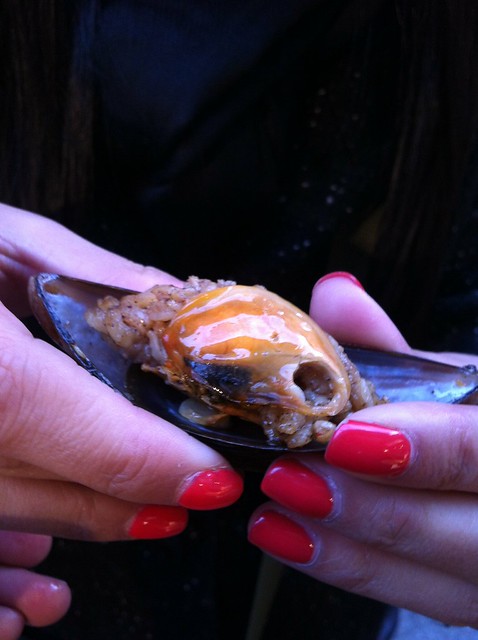
In Taksim, to get away from the sea of people, Justin and I stepped aside to eat shawarma, or meat roasting on a vertical spit, (kebap means “roasted”) and then shaved to fill a pita with some lettuce, onions and tomato. It didn’t need any sauce because the meat was so fresh, juicy and cooked just right. Köfte, or meatballs, are not ball-shaped at all but are flat like hamburgers, and oh-so-tasty even from the small restaurant next to the tram. As nomads, the Turks were limited with what they could cook over an open fire, so it’s not a surprise that the two are the most familiar to even those who have not been to the country.
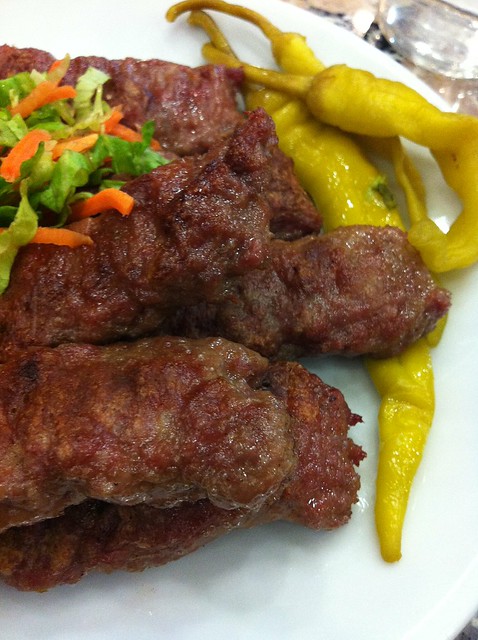
The Turks also eat their meat raw, inspired by the same nomads who carried spiced and raw meat in their saddles. A bit of bulgur is kneaded with some spiced ground lamb and served with cilantro, supposedly to keep stomach problems away. I absolutely loved these çig köfte because they reminded me of steak tartare. Its spiciness was kept at bay with a squirt of fresh lemon juice and some lettuce leaves.
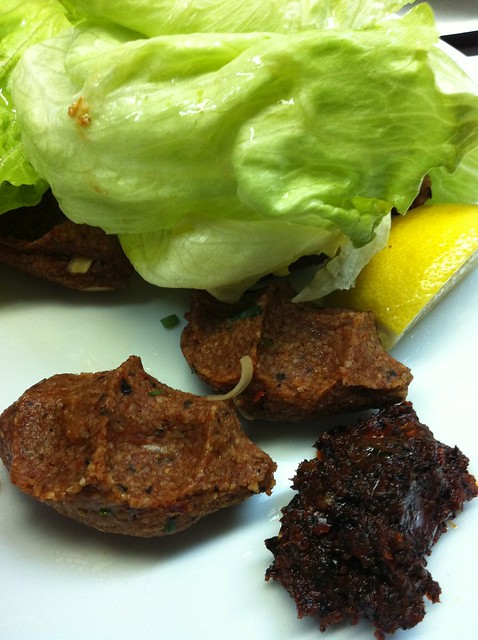
Lahmacun is another version of the pizza, only this time the bread is as thin as a crepe and lightly covered with chopped lamb, onions, and tomatoes. From the same restaurant, Sur Ocakbasi Restaurant near Arab Street, we also had a crusted dome stuffed with rice and more pine nuts and currants. It would make any Filipino rice-happy. There was a large sizzling plate topped with roasting lamb chunks and red and green bell peppers; warm, fresh pita bread that looked more like nan because it was so big, and an assortment of mezes I just wanted to bathe in because I was excited and happy to eat.
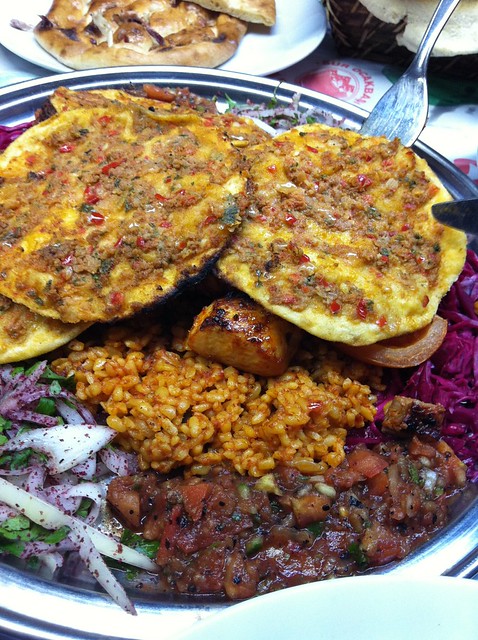

There are these roasted corn kernels in the streets of Vefa that reminded me so much of the Filipino cornick that all I wanted was a sprinkle of paprika and lime juice to make the taste pop–pun intended–out more. They put your order in a paper bag printed with red and white stripes reminiscent of carnival popcorn.
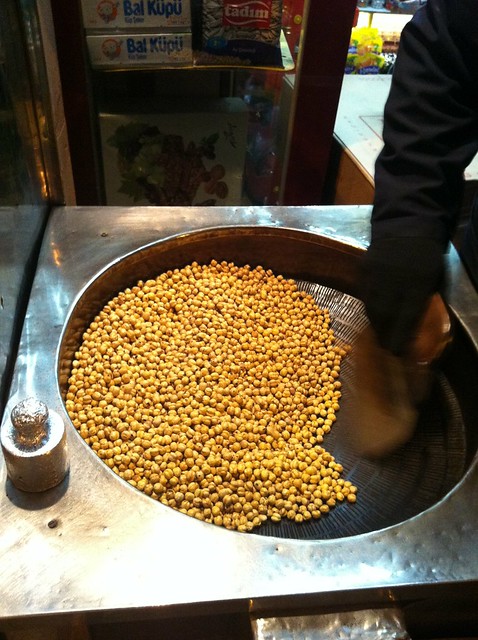
In the town of Kanlica on the Asian side of Turkey during a quick excursion across the Bosphorus River, we tried their special yogurdu, or yogurt, with confectionary sugar. Look at how happy I am here with the fur hat I scored from the Grand Bazaar:

When we weren’t eating on the streets, we were sitting down on carpets. The worst meal we had was from Han Kebab House outside the entrance of Gülhane Park by the Topkapi Palace. Later during our stay in Istanbul, we came across more than one branch and realized despite the Turkish fez that the waiters were wearing, that it probably was not the most authentic representation of Ottoman cuisine. Right by the window were three women massaging and rolling out dough for the crepes they sold inside. Their marketing tool worked because we walked in and paid double for overcooked cubed beef in tomato sauce and a sizzling beef plate that quickly fizzled. Funnily enough, the crepes were the best of the lot stuffed with cheese and spinach.
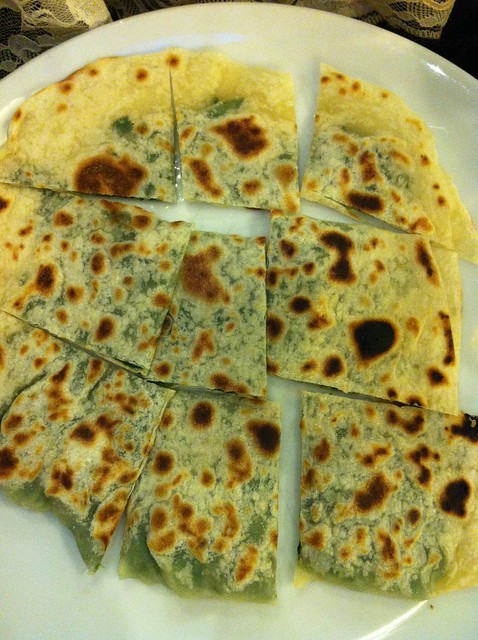
A typical Turkish meal begins with a selection of mezes, or appetizers. I can make mezes a meal in themselves but there are so much Turkish food to try that I didn’t do any of that sort during our trip. Mezes often include several types of eggplant, called patlican; ezme, a fiery hot salad of red peppers; and dolmalar, anything from peppers or vine leaves stuffed with rice, pine nuts, cumin and mint. Sound Greek enough to you? I know; just don’t say that out loud! Though we had a lot of meat, what I loved most about Turkish food are these touches of vegetables with our meals.
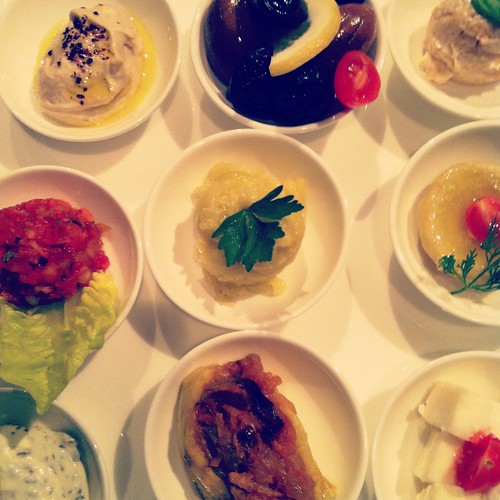
My traveling companions may disagree with me here, but the best meal I had was at Balikçi Sabahattin Fish Restaurant in Old Town. From a menu of fish illustrations, we picked the red mullet and the red snapper to be grilled, while they suggested for us to order the John Dory fried. Everything was done simply with just the most subtle of seasonings, but because the seafood were freshly-caught, they were the best I’ve had in a very long time. We spent a couple of hours plowing through our small plates of octopus and anchovies and drinking our wine. Our servers were very pleased at how we schooled everyone else on how to eat.
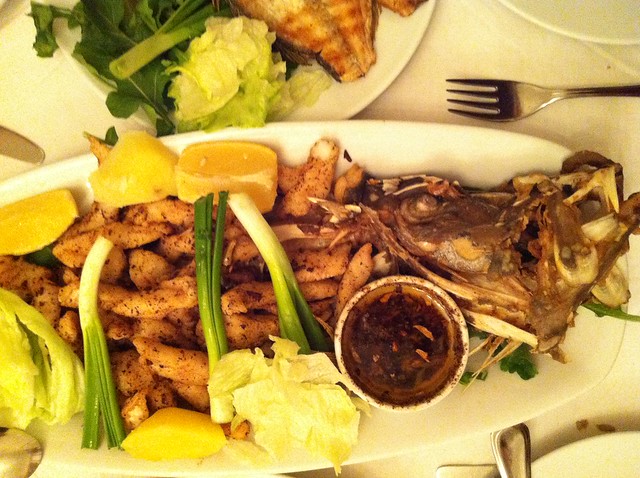
The aftermath. Guess which plate was mine:
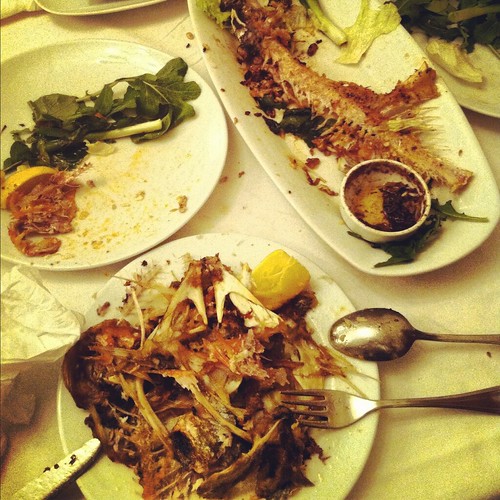
All that food needed to be pushed down to make room for more. We visited a couple of ceramic shops to buy souvenirs where the ritual of accepting tea from the shop’s owner is unavoidable. Every time the owner asked us if we would like some tea, a younger runner would appear out of nowhere with hot tea in small tulip-shaped glasses on a silver tray accompanied by sugar cubes before we had a chance to answer. The size of the glass ensures that the tea gets consumed while hot, and before you slurp your final sip, a new hot glass will arrive. It became one of our running jokes during the trip that we would not even respond anymore when offered tea; we would just wait for someone to appear next to us whether we wanted tea or not.

On a side note, the tulip is Turkey’s national symbol because of Sultan Ahmed III’s peaceful reign. This period, interestingly enough, brought the bulbs to Holland which resulted in the Dutch Tulipmania. So the next time someone insists that tulips come from The Netherlands, you now have an appropriate trivia to bring up.
As for liquor, there are two national drinks: raki and ayran. Raki is an alcoholic drink distilled from raisins and then redistilled with anise. At the Four Seasons Hotel by the Bosphorus, they served it with a bottle of water so you can mix it and make a cloudy concoction that packs a licorice punch. It wasn’t my favorite, but it certainly cleansed my palate and made way for martinis and a lot of the national beer, Efes.
Ayran is a refreshing beverage made by diluting yogurt with water and adding a pinch of salt. The salt was a little off-putting, but it traditionally helped the nomads during dehydrating and shadeless afternoons. Here I am slurpinp it from a beautiful hammered silver bowl:

While we were in the district of Vefa, we walked in Vefa Bozacisi to drink the locals’ winter favorite, boza, a thick fermented drink that uses bulgur as its base. Because street sellers shout “boooza” at night to sell them, tourists have referred to them as booze. It was apparently the preferred drink of the Islamic soldiers since they were forbidden to drink alcohol, but fermented and consumed enough, it gave the same effect. I don’t know how else to describe it besides that it’s yellow and sour and comes in large vats.

We thankfully didn’t see any Starbucks in Istanbul, but the coffee culture is steeped in Turkish tradition as well. It was difficult to get a cup of decent coffee to-go in the morning before we started our rounds, but we ended our dinners with the thick Turkish version to prolong our nights. Indeed, we saw a few people just sitting around long after eating their desserts.
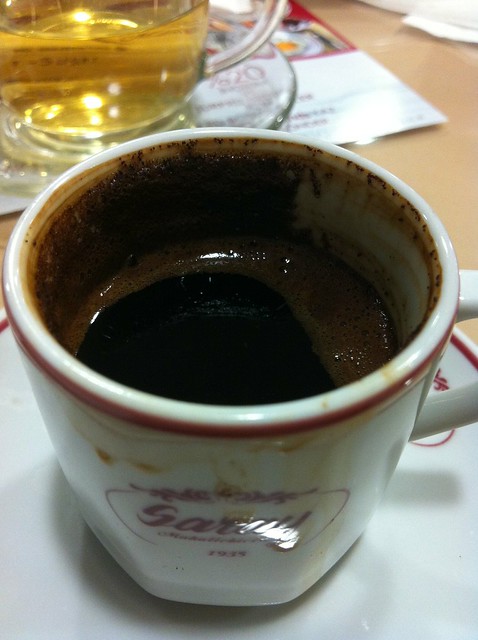
But we’re not done eating yet. At Saray, a multi-level bakery and coffee shop, Tansel, who rented us the apartment we stayed in via AirBnB, helped us order like queens to familiarize us with the Turkish sweet tooth. From the top of this photo and then clockwise: Ayva tatlisi with kaymak, Kazandibi, Kunefe with pistachio and more kaymak, and Sakizli Muhallebi, or mastic-flavored rice pudding. None of them look appetizing, I know, but if you like sweets, these are for you.

And the ubiquitous Turkish delights? Also known as lokum, the sweet candies are made of cornstarch, nuts, syrup, and a variety of flavorings to form a chewy Jell-O-like consistency. If you know someone who has visited Turkey, I would bet that you received a box of them as a present. The hawkers in Grand Bazaar talk a lot to try and get you inside their shops. I finally relented and turned into a Brooklyn mom after hearing “organic” from the fast-talking vendor who quickly packed a few ounces of pistacchio and pomegranate-flavored powdered delights for me before I had any chance to say no.

But when someone tries to win my heart through my stomach, why would I say no?




















